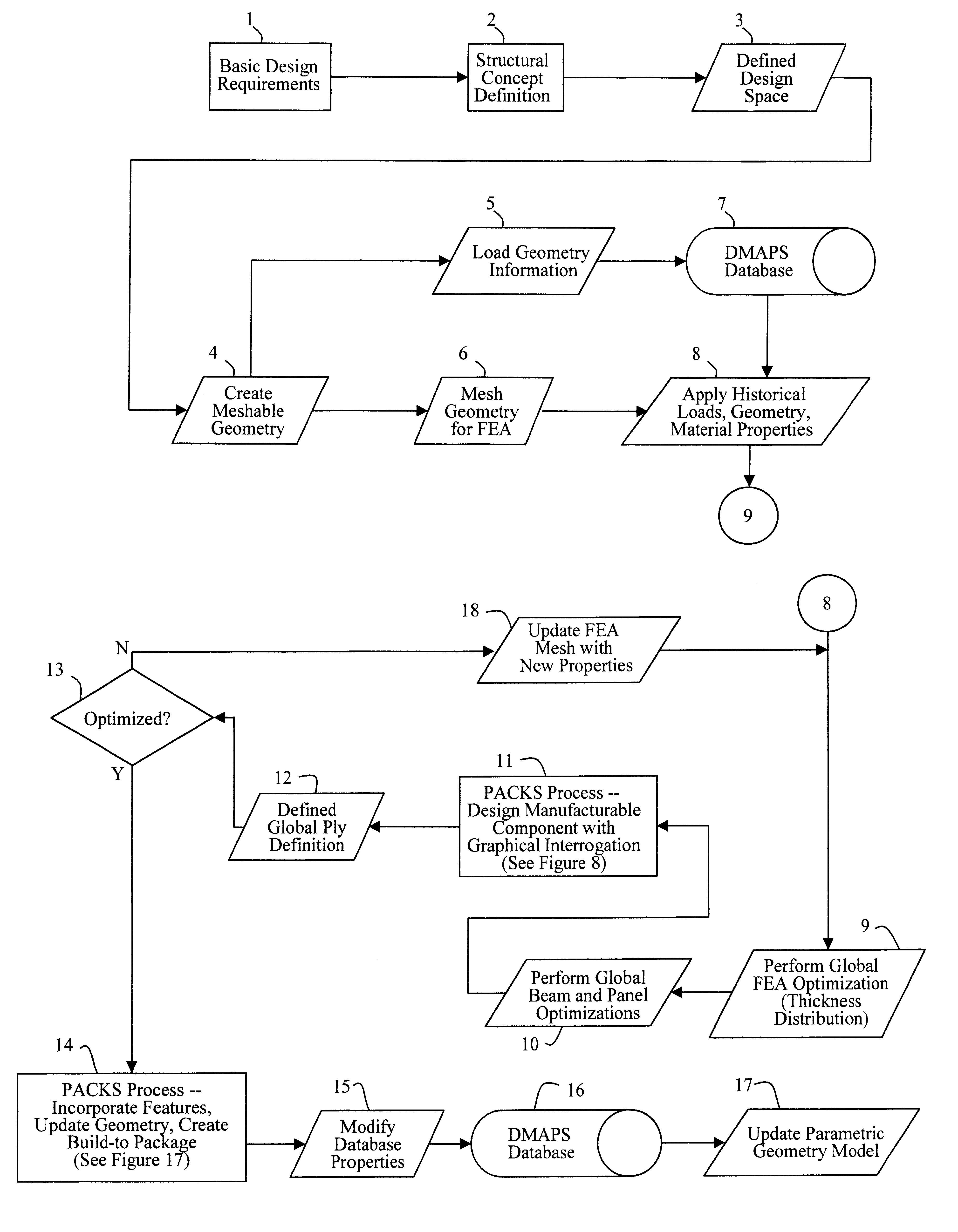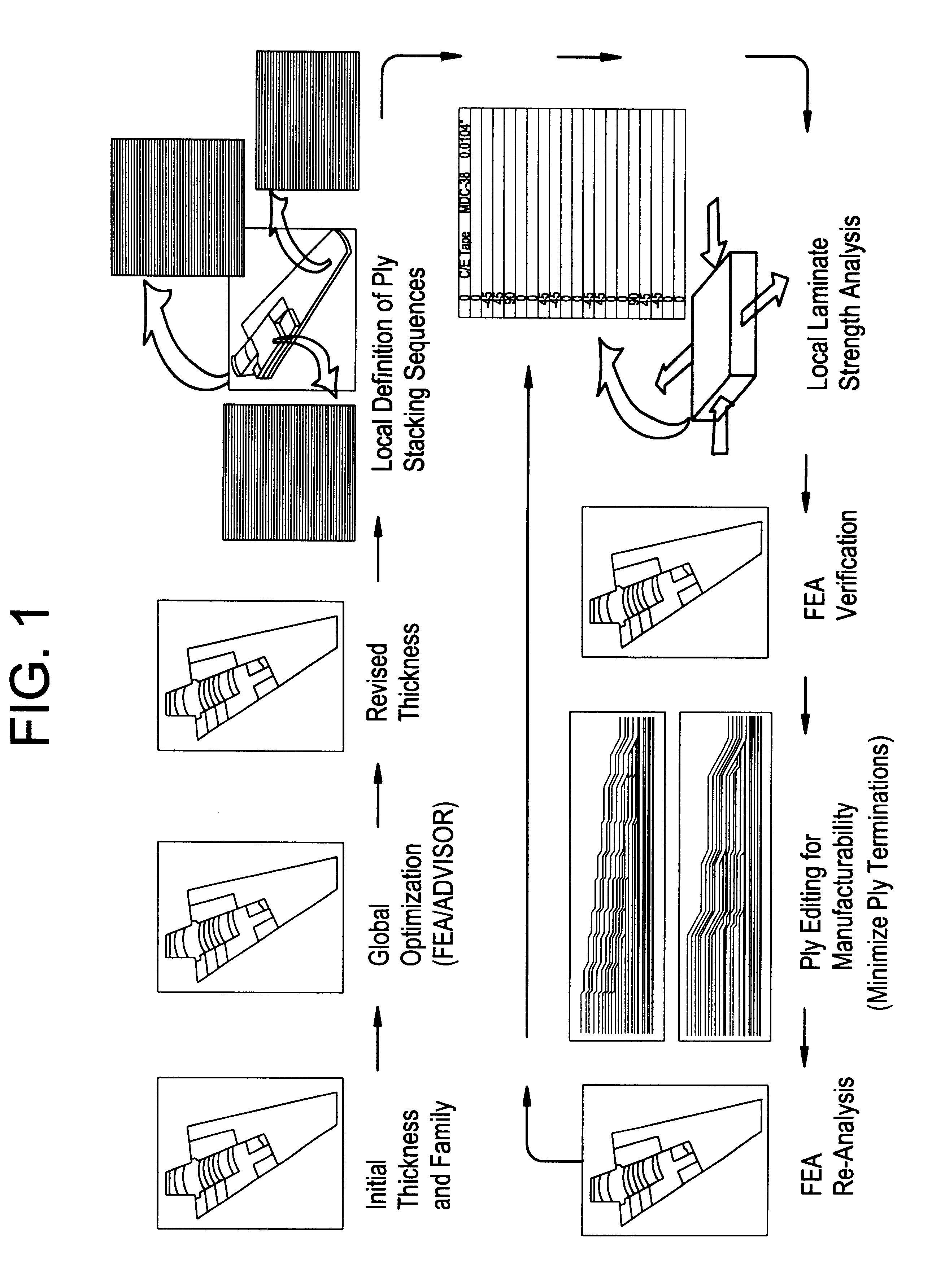Knowledge driven composite design optimization process and system therefor
a composite design and optimization process technology, applied in the field of knowledge-driven composite design optimization process and corresponding system, can solve the problems of high component weight, inability to integrate well with local laminate definitions, and inability to understand the laminate design. , to facilitate the later update of the knowledge base, the effect of facilitating the understanding of the laminate design
- Summary
- Abstract
- Description
- Claims
- Application Information
AI Technical Summary
Benefits of technology
Problems solved by technology
Method used
Image
Examples
Embodiment Construction
The knowledge driven composite design optimization process according to the present invention was developed as a response to the inefficiencies noted in the conventional composite design process, which was described in detail above. These inefficiencies were discovered during the process flow evaluation. The process according to the present invention overcomes these deficiencies by building a single data structure for the composites definition that expands the current Design, Manufacturing and Producibility Simulation (DMAPS) goals for parametric design of composites and then refines the parametrics within the composite laminate definition to the ply level. This is the first key facet of the present invention, since plies are the lowest entities the manufacturing shop handles. Many of the errors that occur during the manufacturing process are due to the lack of understanding of ply location in three-dimensinonal dimensional (3-D) space and how these plies change (propagate or termin...
PUM
 Login to View More
Login to View More Abstract
Description
Claims
Application Information
 Login to View More
Login to View More - R&D
- Intellectual Property
- Life Sciences
- Materials
- Tech Scout
- Unparalleled Data Quality
- Higher Quality Content
- 60% Fewer Hallucinations
Browse by: Latest US Patents, China's latest patents, Technical Efficacy Thesaurus, Application Domain, Technology Topic, Popular Technical Reports.
© 2025 PatSnap. All rights reserved.Legal|Privacy policy|Modern Slavery Act Transparency Statement|Sitemap|About US| Contact US: help@patsnap.com



